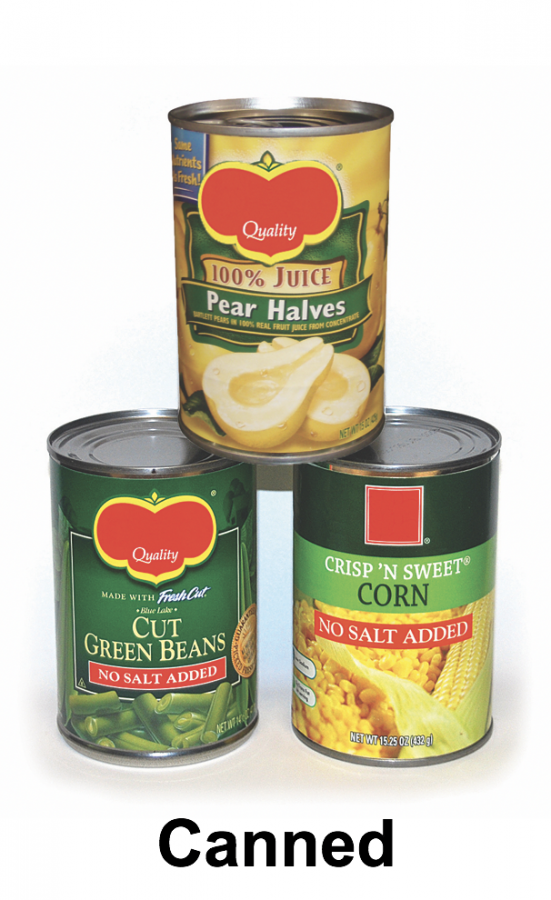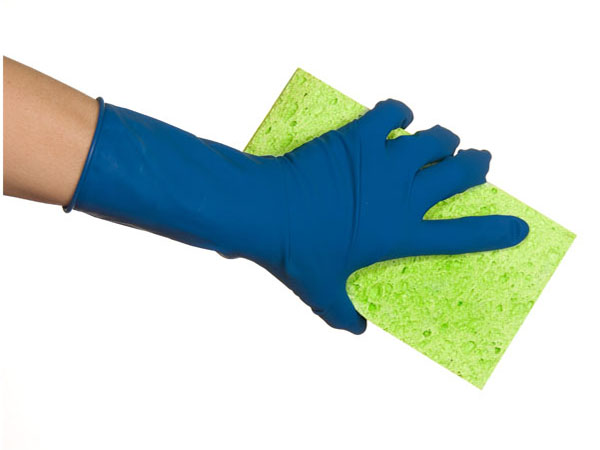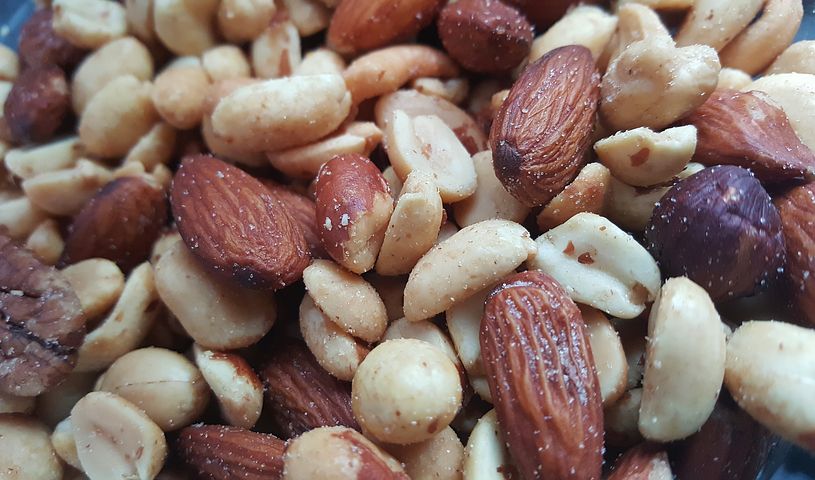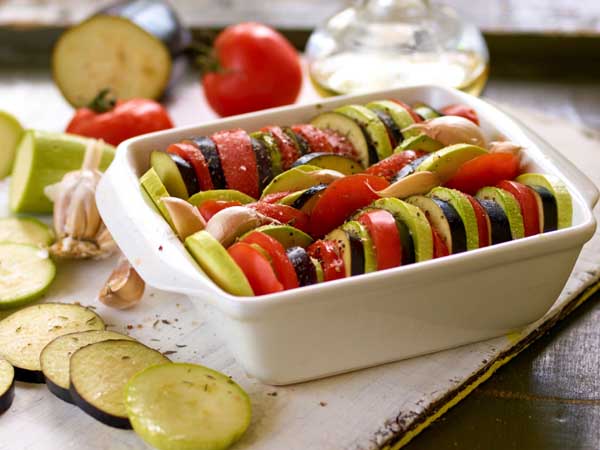Are canned fruits and vegetables healthy?

My husband, who grew up in rural North Carolina spent many of his summers with his grandfather. He saw acres of farmland with fresh vegetables including cabbages, collards, green beans, okra, field peas, squash, corn, tomatoes, cucumbers, watermelons, cantaloupes, Muscadine grapes, peaches, etc. He and his grandfather would get up early in the mornings to gather the crops. Some would be used for daily meals while others were canned and frozen by his grandmother, sold at the farmer’s market, and given to needy families. They would do this every day until it was time to replant for the next season.
While many of us don’t have access to a large family garden for fresh fruits and vegetables, there are still many available healthy canned options.
Researchers at Michigan State University found that canned fruits and vegetables are just as nutritious as frozen or fresh. For canned tomatoes in particular, canning improves the content of B vitamins, vitamin E and carotenoids compared to fresh. Fiber in beans becomes more soluble through the canning process, and thus more useful to the human body. Additionally, a nationally represented survey of American adults found that adults and children who frequently eat canned foods (6 or more items over 2 weeks) have healthier eating habits compared to those who eat 1-2 canned food items in the same time period.
Eat the fruits and vegetables you prefer whether canned, fresh, frozen or dried. Canned foods simply make healthy eating easy. Canned fruits and veggies are convenient to have in your pantry for times you can’t get to the store; they can even be kept at work (with a can opener) for a quick lunch or an afternoon snack. Since they don’t expire quickly, you won’t waste money when buying canned veggies – which sometimes happens with fresh produce that goes bad. Here are a few tips when buying canned fruit and vegetables:
Watch for sodium:
Sodium is usually added to canned foods to preserve them. Look for low-sodium, reduced-sodium or no-salt-added labeled foods. Compare the sodium content on the Nutrition Facts label and choose the product with the lowest amount. Drain and rinse canned veggies to reduce sodium even more.
Watch for added sugar: Look for fruit that’s canned in water, its own juice, or light syrup (drain and rinse).
Delicious uses:
- Add drained cans of corn, tomatoes and pinto beans or any other vegetable to low-sodium chicken broth for a super-fast and filling vegetable soup.
- Use a blender, food processor or a fork to smash drained and rinsed garbanzo beans, northern beans, or any beans into a bean dip for baby carrots; add a little lemon juice and garlic powder for some zip.
- Serve canned fruit as a dessert topped with low-fat, no sugar-added yogurt; or top whole grain cereal with canned fruit.
You can feel confident that canned fruits and vegetables are nutritious, safe and full of flavor. Fill up your pantry with your favorite canned produce to help you prepare nutritious, quick everyday meals for your family more often while saving time and money.
ENJOY!!
Stephanie
Sources: http://www.heart.org/HEARTORG/GettingHealthy/NutritionCenter/HealthyCooking/Fresh-Frozen-or-Canned-Fruits-and-Vegetables-All-Can-Be-Healthy-Choices_UCM_459350_Article.jsp#.Vp0xBVMrJmA
http://www.fruitsandveggiesmorematters.org/canned-fruits-and-vegetables-are-good-for-you
Spring Clean Your Kitchen!

Spring is just around the corner which means it’s time to start planning my spring cleaning activities. Top on my list this year is the kitchen. It’s important to give the kitchen a good food safety check and cleaning, especially refrigerators and freezers where raw meat, poultry and seafood is stored. There are three basic areas in cleaning a kitchen.
SHELF LIFE
I always start with checking the shelf life of food in both the pantry and the refrigerator.
This is a good time to throw away foods that are losing their quality or have spoiled. For
a detailed listing of the shelf-life of foods, as well as a kitchen safety quiz, download the free app
Make spring the time to begin new food safety habits. Once a week, make it a habit to throw out perishable foods that should no longer be eaten or even better, turn your leftovers into planned-overs and use them before they spoil.
REFRIGERATOR
Next, move to your refrigerator. You should routinely be cleaning your refrigerator, but spring is a perfect time to do a more detailed cleaning.
- Check that the refrigerator temperature is set to below 40°F. Purchase a refrigerator thermometer if you don’t have one.
- Keep the refrigerator clean always; this is a good time to look for unnoticed spills and
remove lingering odors. Wipe up spills and clean surfaces with hot, soapy water and
rinse well. If shelves, produce drawers, and door bins are removable, take them to the
sink and wash them there. Check to see that the door gasket still has a tight fit. - To keep the refrigerator smelling fresh and help eliminate odors, place an opened box of baking soda on a shelf. Avoid using solvent cleaning agents, abrasives and any cleansers
that may impart a chemical taste to food or ice cubes, or cause damage to the interior
finish of your refrigerator. Follow the manufacturer’s instructions. - Wipe down the top and outside of the refrigerator. How does all that dust end up on
the top of my refrigerator? Since I’m only 5’2” tall, I can’t see that dirt unless I’m on a
chair reaching for something in the cabinet above the refrigerator.
KITCHEN SURFACES
The last area I clean are all the kitchen surfaces. Remove all items from your countertop and wash with hot soapy water. Sanitize your counter top by spraying the surface with a solution of 1 Tablespoon of unscented, liquid chlorine bleach per gallon of water. Let the countertop air-dry. Clean all countertop appliances and decorative items before returning to the countertop.
This is also a good time to get rid of unnecessary items taking up room on your counters. I’m going to go minimal this year! Having a clean and sanitized kitchen will help reduce cross contamination in the kitchen, and minimize the risk of food-borne illnesses.
Now, to empty out all the kitchen cabinets…that’s work for another day! I think I’ll go outside and enjoy the spring sunshine.
Enjoy!
Suzanne
Go Nuts!!
Nuts are my favorite snack to munch on in between meal times. They are bite-size nutritional powerhouses, packed with heart-healthy fats, protein, vitamins, and minerals. When I choose this vitality-boosting snack, I stick to a handful mix of unsalted nuts to get the best valuable vitamins and minerals in my diet. All nuts have different nutrition credentials and will offer various health benefits. Here are our top 5 nuts and with their benefits.
Stay Active Indoors

When the weather gets bad, it is hard to stay active inside the house. However, that does not mean that doing physical activity inside is impossible! There are multiple games and ways to get exercise indoors involving the whole family. One effective way of exercising is yoga. Family yoga involves everyone practicing yoga poses together and can be a really fun activity. Yoga can also bring peace to a family home while toning muscles, increasing flexibility, and reducing weight.
Another way of getting active indoors is playing games. Animal charades is a game where parents write down different types of animals on pieces of paper that can be drawn from a cup. Parents and children can take turns acting out which animal they pick by moving and making sounds. This game encourages creativity in children and adults and can make physical activity seem effortless.
A classic fun game to play is freeze frame. This can be with or even without music playing. If someone is caught still moving after the word “Freeze!” is said, they have to keep dancing until all the other players are out. This game is so easy because it doesn’t involve any equipment except a voice. It is simple and works, especially with children.
A cool game that is fun for children to play is called “Stretch and sprout”. This game involves children imagining themselves as a seed by being curled up in a tight ball and then stretching out as far as they can imagine. By creating a visualization of the child transforming from a seed to a flower, this encourages imagination while stretching all of the muscles in the body. Another way to get more out of this game is by encouraging the child to spring up and jump at the end when they are all stretched out.
Another creative game is called “ABC” where parents and children give each other words to spell and spell them with their arms and legs. This game also can help children learning how to spell. By spelling out words with arms and legs, both parents and children exercise their limbs while toning their cores.
Whether it’s a simple hands-free game or a yoga session, these methods are effective in getting the whole family active while being indoors. These exercise ideas may even make the children excited about the next rainy day when they can stay indoors to play these games!
Taylor
References: http://www.parenting.com/gallery/18-fun-active-indoor-activities?page=6
Enhancing the flavor!

How do you get out of the rut from cooking the same old chicken, ground meat or fish recipes? The favorite recipes of your family are getting monotonous and becoming not so favorite anymore. If this sounds familiar, you are not alone. I heard this over and over again from friends and neighbors. So what is the answer? How can I feed my family healthy, low cost, and easy to prepare foods? I need some new ideas.
Let’s start with the meat and try some different cooking techniques. Pan-searing, broiling, and grilling along can affect the taste by intensifying the flavors of the meat. Try the crock-pot for easy and tasty one pot meals. The list of possibilities of what you can add to your entrée dishes is endless. Have you thought about using red/green/yellow peppers, avocados, artichokes, apples, or zucchini noodles to complement your meat?
Try a different way to prepare your vegetables. Grill or roast and add spices or herbs to change their taste. Citrus juice or grated citrus peel can add a tangy flavor. Fresh cilantro and chipotle peppers will add a bold flavor. Condiments can makeover a recipe. Try horseradish, flavored mustards, salad dressings, or salsas and see the difference they make in the taste.
Try a few of these suggestions, and I bet your family will enjoy the menu makeover and ask for more!
Judy
Source: http://www.eatright.org/resource/food/planning-and-prep/cooking-tips-and-trends/enhancing-the-flavor-of-your-meal